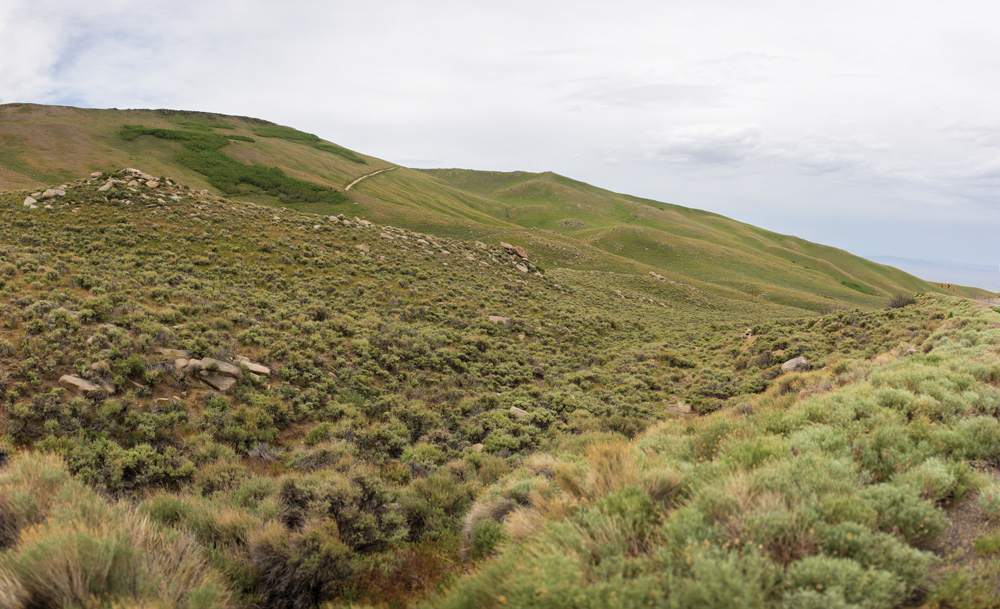Sage Country
Summer 2023
Nevada’s state flower is the heart of the West.
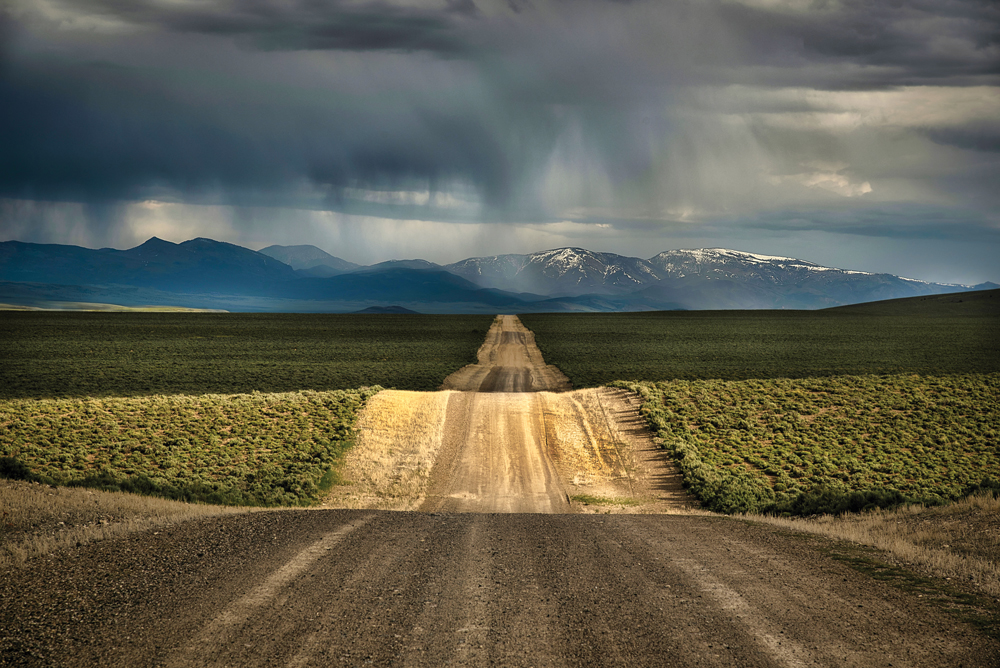
BY CORY MUNSON
If you’ve been in or near the Great Basin, you know sagebrush. It’s practically everywhere, from marshlands and mountainsides to cities and salt flats. It never appears by ones or twos, either. When it’s there, it’s usually stretching across the horizon like an ocean.
In fact, sagebrush is so common that it tends to disappear from notice, blending into the background like clouds or restaurant chatter. Then one day, you’ll be driving down a windswept valley, adrift in the blue-gray sea, and suddenly think, “Wow, this is a lot of sagebrush.” You are reminded that there is so much of it, and it’s everywhere you look. Really, sagebrush is something of an ecological wonder.
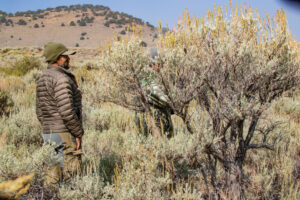
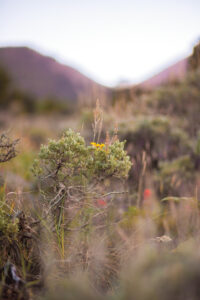 ARID EMPEROR
ARID EMPEROR
All desert plants find clever workarounds to survive, but few thrive like sagebrush. It is an evergreen, which means it collects energy year-round. While other plants and grasses sleep the winter away, sagebrush is perpetually powered up and ready to start propagating as soon as spring arrives.
The leaves are short and stubby to limit evaporation, but they’re also covered in tiny gray hairs called trichomes. These hairs help shield the sagebrush from relentless solar radiation and give the plant its distinct faded color.
When good soil and water are nearby, sagebrush grows around 4-5 feet tall, but it’s known to reach up to 10 feet. It can grow so tall because it has two root systems, one near the surface that collects precipitation and another that delves deep into the soil. In optimal conditions, these taproots can run 12 feet deep. When settlers were deciding where to plant crops or dig a well, they kept an eye out for the particularly tall brush.
Another reason there’s so much sagebrush is because nothing eats it. Even hungry animals rarely nibble the leaves (unless it’s the only food left) despite them being about as nutritious as alfalfa. Sagebrush is a culinary pariah because it is packed with a volatile oil called terpene that gives off a bitter flavor (this is also what gives the desert its distinct and adored aroma after a rainstorm). Only a handful of creatures—the pronghorn and sage grouse, for instance—have learned to like the flavor.
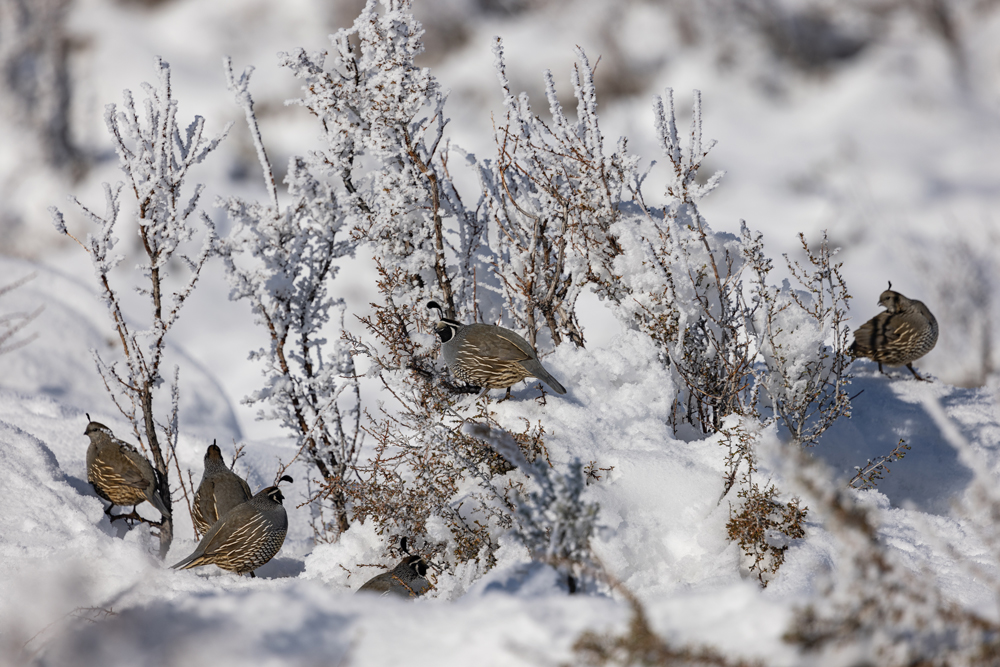

HOME AND HEARTH
Sagebrush is a prolific plant, but it’s also an important part of the desert ecosystem. It is an emergency food source during the winter, and its wide, billowing frame provides critical shelter. Each brush is like a little world, a potential home to lizards, birds, mice, arachnids, and hundreds of insect varieties.
Native grasses and annuals also benefit from its protection. Not only are they kept out of the elements and hidden from grazing animals, but they grow better. Shed from sagebrush gives the ground plenty of nutrients, and the root system keeps the soil aerated. During the winter, sagebrush acts like a mini reservoir by holding onto the snowpack until it can be used in the spring.
Sagebrush has long been used by people as a medicine and natural resource, though its seeds were rarely eaten except to stretch food supplies. Its leaves are steeped to make herbal teas or are pounded into pulp to form a healing balm, and its smoke accompanies special occasions such as births. Sagebrush bark is used to make insulation and cordage, and the pitch is harvested and turned into glue. Sagebrush is packed with oils, and when it’s dry, it burns very hot. It’s long been used a fuel in areas with few trees.
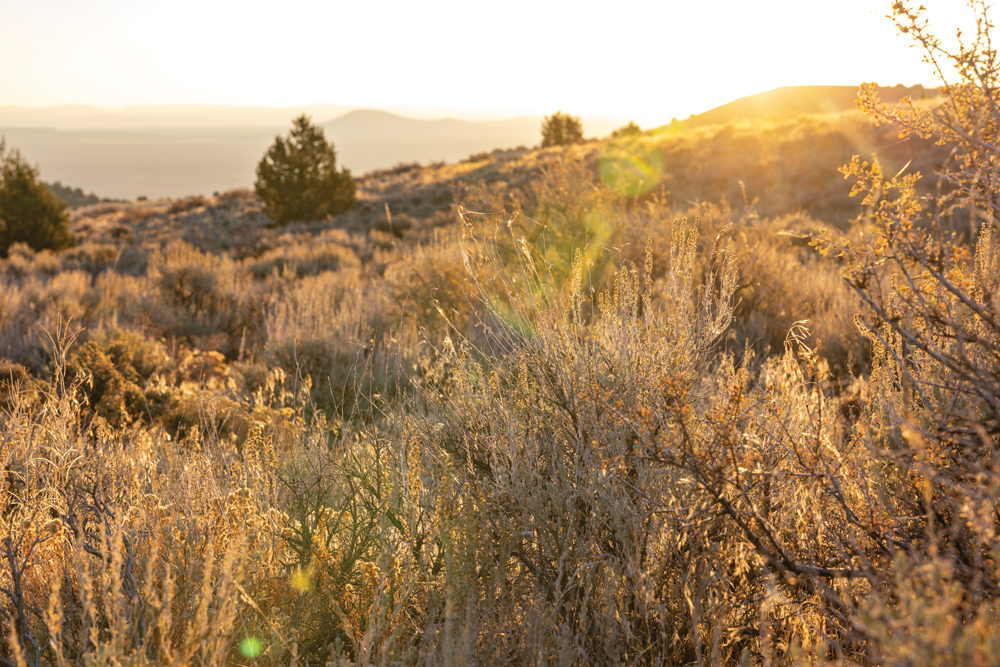
A CHANGING LANDSCAPE
The sagebrush ocean we know today is impressive, but it doesn’t look the same as it did 200 years ago. Before the 1800s, sagebrush lived alongside a lush and diverse carpet of native plants and grasses. What changed?
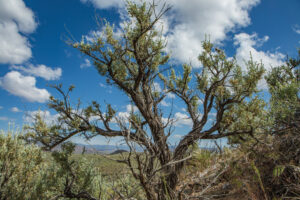
As early as the 1890s, Great Basin residents were aware that overgrazing was destroying the native grass. The area’s first herders were raising too many heads of sheep and cattle, and the delicate desert ecosystem was unable to absorb the shock. The grass couldn’t keep up, only to be replaced by invasive weeds like cheatgrass and—of course—even more sagebrush.
In addition to overgrazing, a century of wildfire has also changed the desert ecology. Today, we know fire plays an important role in ecology: It clears out dead vegetation and rejuvenates soil. But after settlers arrived, most ignitions were quickly stamped out and that dead vegetation piled up. The West became a waiting powder keg.
The new wildfires were unpredictable and devastating. What little grass remained was gone, and sagebrush-dense stands burned even hotter. Unfortunately, unlike other plants, sagebrush seeds don’t easily survive flames, which means that once an area burns up, they’re gone. Nearby stands and—increasingly—human intervention can provide new sprouts, but rejuvenation takes decades.
There is much work to do to protect sagebrush, but it is possible. Restoration projects have seen small-scale success. However, the fact remains that sagebrush territory has been steadily decreasing for centuries. More than a million acres have been lost in just the last 20 years. It is a hardy plant, but it is also slow-growing and sensitive to change.
Everyone can do their part to help preserve the sagebrush sea. Only start a campfire in designated areas, and don’t blaze a trail through it. Sagebrush should also never be taken from the desert—it’s illegal to harvest it without a permit. If you’re interested in adding some to your landscape (or a bonsai version to your office), contact a nursery.
If you’re in the Great Basin, take a sojourn out into the wilds to visit it. Hopefully, the sagebrush will be just as mighty and dramatic for generations to come.
